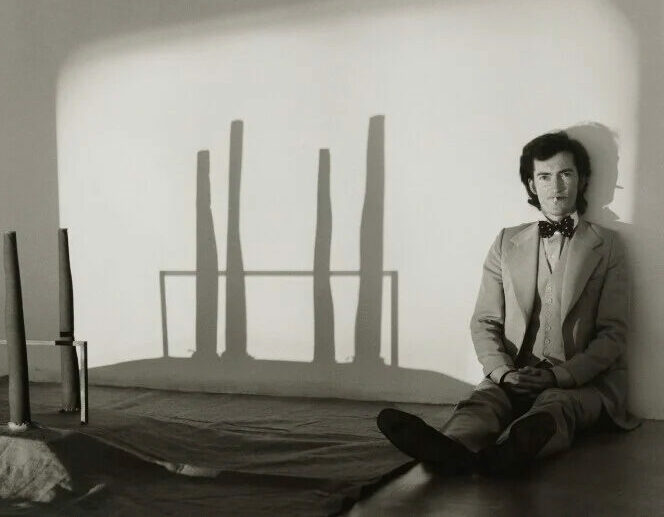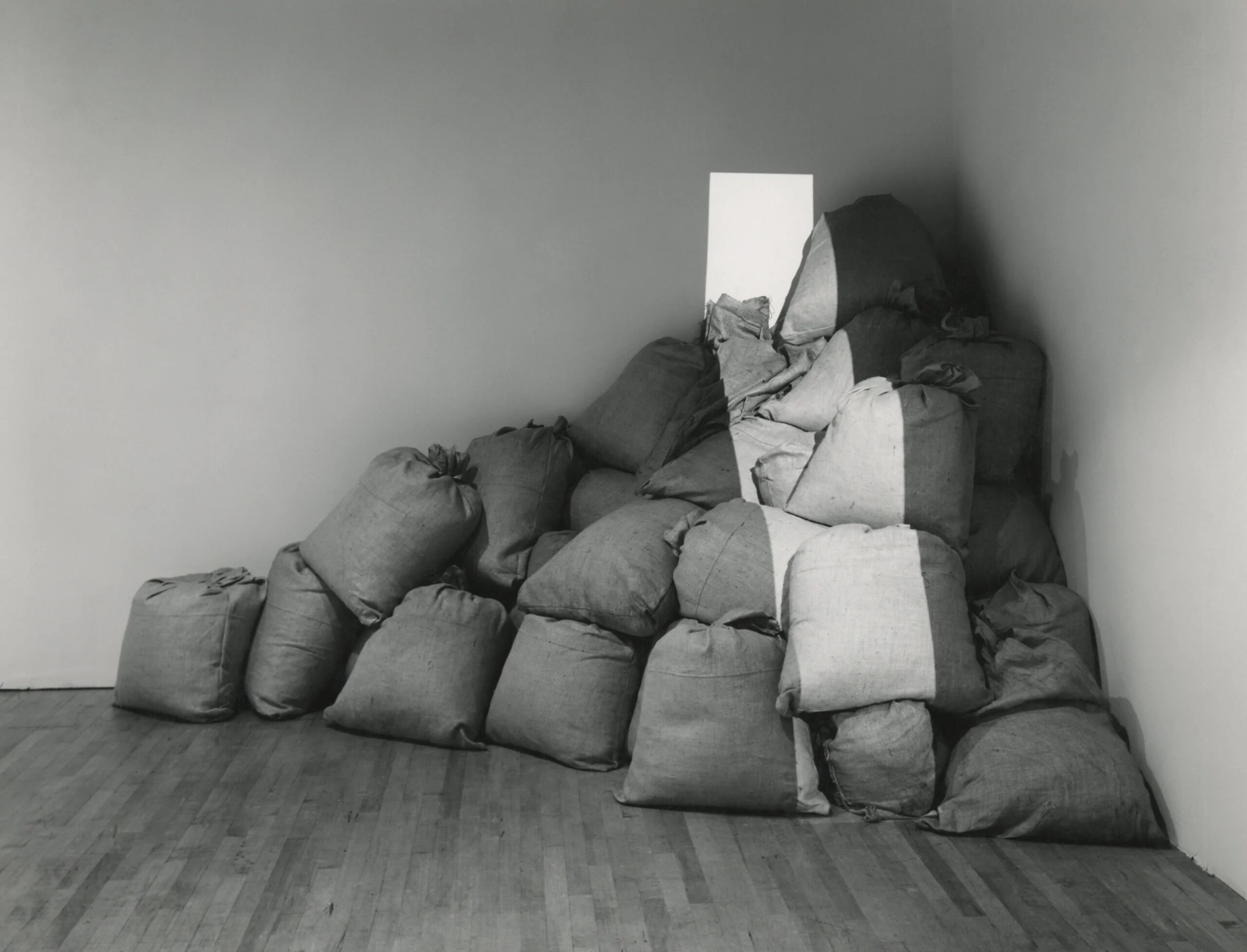Barry Flanagan
Born in 1941 in Prestatyn, United Kingdom, Barry Flanagan started studying architecture and sculpture in 1957-58. After a few years of interruption and evening classes with the British abstract sculptor Anthony Caro, he continued his artistic studies in London. Flanagan protested, with his fellow students Richard Long, Gilbert & George and Bruce McLean, against the dominant traditional conception of sculpture. Faced with abstract metal sculpture, then widespread, he developed new ideas about what sculpture could be. During his first solo exhibition in London in 1966, Flanagan stood out for his sculptures made of abnormally “soft” materials such as canvas, rope and sand. These organic sculptures have an elementary form and a timeless character. Flanagan’s works from this period have commonalities with those of Carl Andre, Robert Smithson and Eva Hesse. Very quickly, he is recognized internationally. He was notably invited to participate in the successful exhibition When Attitudes Become Form (1969, Kunsthalle Berne). In the second half of the 1960s, Flanagan devoted himself to happenings, “dematerialized” art and the media. He exerted a great influence on the spectacular development of avant-garde cinema. Around the same time, the artist developed a passion for the ideas of Alfred Jarry, the author of the famous play Ubu Roi (1896). His approach to sculpture became increasingly playful and humorous. Flanagan let the materials find their form in an almost anarchic way: “I just push things to make themselves known as sculpture. ». In the 1970s, he began to make sculptures in more durable materials, such as stone, metal and bronze. Turning away from theoretical artistic concerns, he resolutely opted for sculptures that have a direct visual and artisanal impact. In 1979, he created his first sculpture of a leaping hare, which became the trademark of his art. The horse, archetype of classical sculpture, as well as dogs and elephants also appear as motifs in his work. The wide success won by his animal sculptures, figurative and accessible, has in the meantime somewhat eclipsed the profoundly innovative character of his early works.

